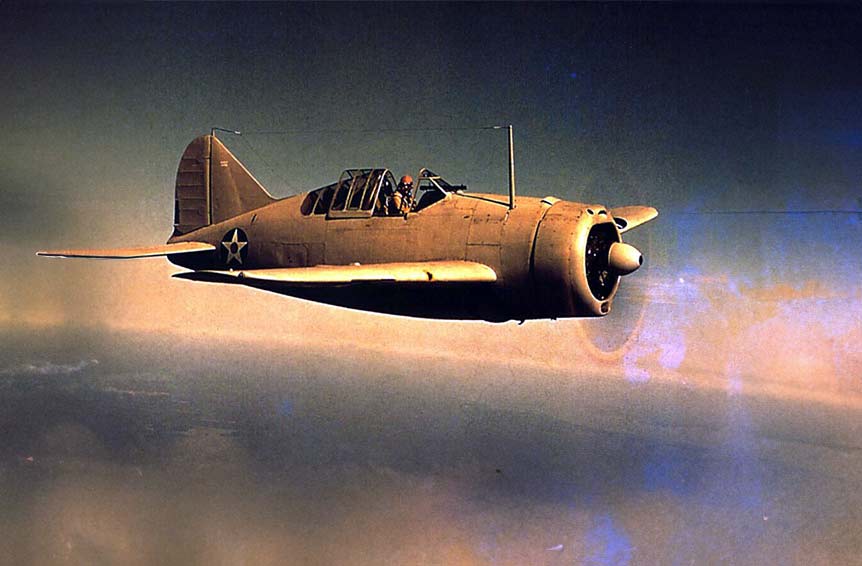The Brewster F2A Buffalo was an early American monoplane fighter, known for its compact design and initial success, but later outclassed in WWII.
This article delves into the Brewster F2A Buffalo, an early American monoplane fighter aircraft. It explores the Buffalo’s development history, analyzing the context of the 1930s aviation industry and military needs. The design of the F2A Buffalo is examined in detail, highlighting its technical aspects, strengths, and weaknesses. The aircraft’s performance metrics, including engine specifications, speed, altitude, and range, are compared with contemporaneous fighters. The Buffalo’s military use, operational roles, and effectiveness in various conflicts are discussed, along with its distribution to other countries and eventual replacement in service.
The Brewster F2A Buffalo was one of the first monoplane fighters of the United States Navy, marking a transition from biplane to more advanced aircraft designs in American military aviation during the late 1930s and early years of World War II.
History of the Development of the Brewster F2A Buffalo:
The development of the F2A Buffalo began in the mid-1930s, a period characterized by rapid advancements in aviation technology and growing international military tensions. The United States Navy, recognizing the need to modernize its air fleet, sought a new fighter aircraft that could outperform existing biplanes and match emerging foreign designs.
The Brewster Aeronautical Corporation, led by chief designer Dayton T. Brown, responded to this need. The Buffalo’s design was initiated as part of a competitive bid for a new Navy fighter. The first prototype, designated XF2A-1, took to the skies on December 2, 1937.
The Buffalo was developed in response to the Navy’s requirements for an aircraft that could operate from aircraft carriers, provide a high level of agility, and carry sufficient armament. Its development occurred against the backdrop of rising global conflicts and the U.S. Navy’s anticipation of future air combat challenges.
Design of the Brewster F2A Buffalo:
The Brewster F2A Buffalo was a single-seat, all-metal monoplane with a retractable landing gear. It had a length of 8 meters (26 feet 4 inches), a wingspan of 10.7 meters (35 feet), and a height of 3.6 meters (12 feet). The Buffalo’s design was compact and robust, with a relatively small wing area that contributed to its distinctive appearance.
One of the design’s key features was its Wright R-1820 Cyclone radial engine, which provided a balance of power and reliability. The aircraft was armed with a combination of machine guns and, in some variants, provisions for bombs. The Buffalo also featured an enclosed cockpit, which was becoming standard for fighter aircraft of the time.
However, the design had its drawbacks. The Buffalo was relatively heavy for its size, and its small wings limited its maneuverability. These factors became significant disadvantages as newer, more agile enemy aircraft entered service.

Performance of the Brewster F2A Buffalo:
Powered by a Wright R-1820-34 Cyclone radial engine, the F2A Buffalo could produce up to 950 horsepower. This enabled a top speed of around 517 kilometers per hour (321 mph), a service ceiling of 9,800 meters (32,000 feet), and a range of approximately 1,664 kilometers (1,035 miles).
In comparison to contemporary fighters such as the Mitsubishi A6M Zero and the Grumman F4F Wildcat, the Buffalo was initially competitive. However, it soon became apparent that the Buffalo was outclassed in terms of speed, armament, and agility.
Military Use and Combat of the Brewster F2A Buffalo:
The F2A Buffalo first saw combat with the Finnish Air Force during the Winter War against the Soviet Union, where it performed admirably. However, in the Pacific Theater, the Buffalo struggled against more advanced Japanese aircraft, particularly the A6M Zero.
The Buffalo was initially used by the U.S. Navy and Marine Corps, but its limitations in combat led to its quick replacement by more capable aircraft, like the F4F Wildcat. The Buffalo also served in the air forces of countries such as Finland, Belgium, and the Netherlands, often with more success than in American hands.
The Brewster F2A Buffalo represents an important transition phase in fighter aircraft design and capabilities during World War II. While it was quickly outclassed by more advanced enemy aircraft, the Buffalo’s early successes, particularly with the Finnish Air Force, demonstrated its potential under different operational conditions. The Buffalo’s story highlights the rapid pace of technological and tactical evolution in military aviation during the war.
Back to the Warbirds section.